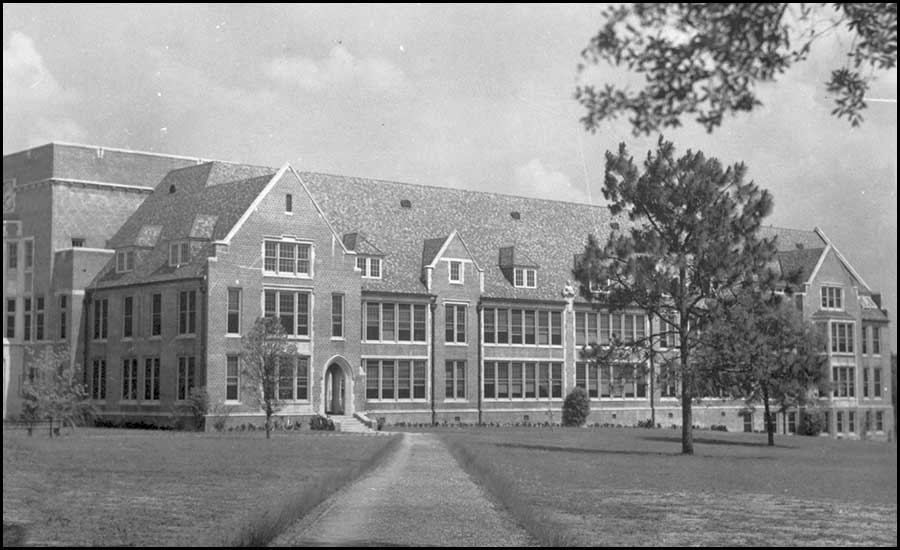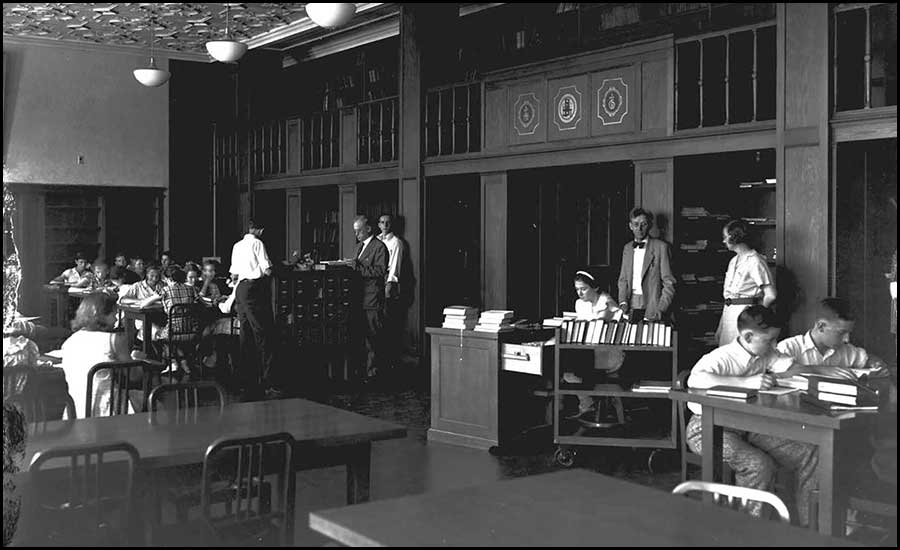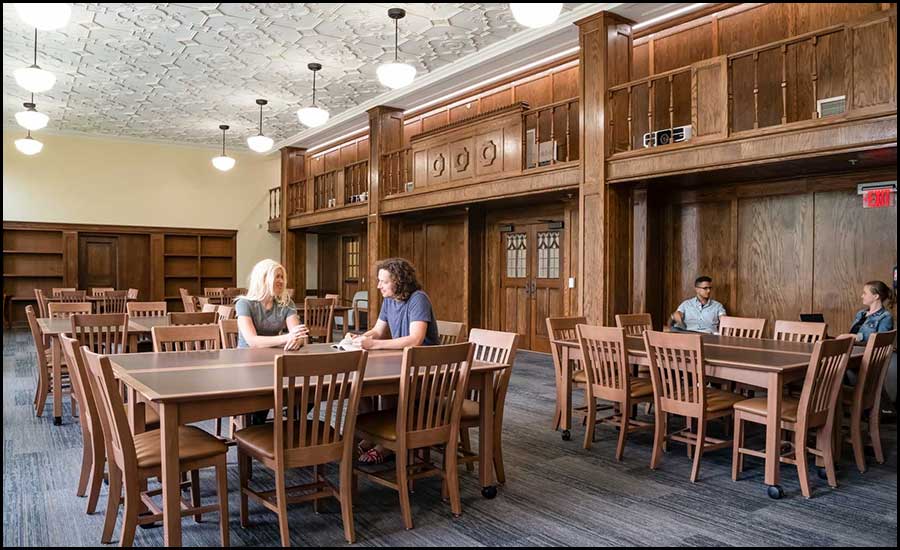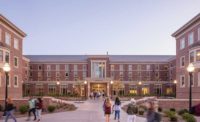Built in 1932, Norman Hall is located at the heart of the University of Florida’s Historical District. The building was originally the home of P.K. Yonge Laboratory School, a K-12 educational center for experimental teaching and educational innovations. Later, it was repurposed as the College of Education building for the University of Florida. It was then granted its new name, Norman Hall, after James W. Norman, previous dean of the college of education.
As a historical building and architectural gem — boasting a durable English bond brick façade, clock tower, and cast stone gargoyles — Norman Hall has demonstrated extraordinary resilience since its creation. In order to keep up with modern collegiate demand, the nearly 100-year-old building and its infrastructure required updating. The original building was not equipped with an HVAC system, and the minor renovations that took place provided limited, piecewise cooling and heating solutions. This renovation offered an opportunity to holistically integrate HVAC systems into the building to improve thermal comfort, enhance IAQ, and comply with current building code requirements. In addition, the classrooms lacked modern telecommunications equipment for teaching and ADA-compliant access for those with mobility issues.
In 2017, Norman Hall received state funding to complete its first major renovation in 85 years. As part of the project team, Affiliated Engineers provided the design services for extensive MEPH updates that were necessary in the facility. After a two-year span of design and construction, including the resolution of previously deployed piecewise engineering. Norman Hall received a LEED Gold certification. Designed with sustainability in mind, the renovated facility features a new conference center and classrooms with modern technology. The entire project team continually drew inspiration from the scale and complexity of the challenges presented by this renovation.
Giving Back the Space
A shared goal of the University of Florida and the design team for the Norman Hall facility was to preserve the historical character lost during the past few decades of periodic minor renovations. Some of these renovations were not sustainable or aligned with the historical aesthetic, such as adding window air conditioning units to classrooms or adding ceiling tiles that covered historical corridor woodwork. The centerpiece of this effort is the restoration of the classrooms. With the reference of historical photographs, AEI’s partner Walker Architects restored the wood paneling balcony library and commissioned a local artist to hand-paint the original ornate plaster tiles that were hidden behind a false ceiling for decades. In order to provide adequate heating and cooling to the space without interrupting the historical integrity, linear diffusers and color-matched grilles were strategically hidden in between the wood columns and panels to provide a uniform airflow throughout the room. The architectural lighting design in the renovated room was a replica from the original, replaced with energy-efficient LED lighting and dual-occupancy sensor designs.
The Balance Between Functionality and Sustainability
Prior to the renovation, the building had a total of 67 air-handling systems, most of which were single-zone units that were difficult to service and inefficient to operate. After reviewing the new floor plans with Walker Architect, Affiliated Engineers provided solutions to centralize the cooling and heating of the building based on several major zones: the new conference center, cafeteria, auditorium, building north classrooms, and building south classrooms.
Most classroom spaces were designed with their own fan coil units in the newly integrated closets, providing localized control and easy service and maintenance access. Outside air was fed to each classroom with the new dedicated outside air systems (DOAS) located in the attic space. The DOAS featured wrap-around heat pipes that are wrapped around a cooling coil with a precool section before the cooling coil and a reheat section after the cooling coil. The heat pipe coils help precool the humid air on a Florida summer day and reheat the dry air back up to save on air terminal level reheat energy. Demand control ventilation was achieved in the classrooms by implementing a control sequence that ties in the ventilation air damper to the space occupancy sensors. Along with the installation of new, high-performance architectural elements, such as low-E glazing, the new building outperformed the ASHRAE 90.1-2007 baseline building by 24% in terms of energy cost. In 2020, the building was officially certified LEED Gold.
A New IAQ Mission
Improving IAQ was an additional goal of the renovation project. At the initiation of the project, an asbestos assessment was performed, and legacy elements were mitigated. All the new building materials met the low-volatile organic compound (VOC) criteria by the LEED program. The original building mechanical system often had no or little outside air to meet ASHRAE 62.1's minimum outdoor air requirement. In the new design, room-by-room, multi-zone ventilation calculations per ASHRAE 62.1 were conducted, and the spaces were designed to meet or exceed outside air requirements. All the main air handlers and DOAS units featured pre and final filters. The final filter was rated MERV 13 with the ability to catch dust, pollen, smoke, and virus carriers. The units also had UV lights at the cooling coil to avoid mold and bacteria growth. During the COVID-19 pandemic, AEI engineers have revisited classroom occupancy capacity, social distancing, and IAQ issues with the University of Florida’s College of Education to reassure them of a safe reopening.
Speaking about the project, Dr. Glenn Good, Dean of the College of Education, remarked, “The renovations will make the building more suitable for preparing the educators and educational leaders who will address the educational opportunities and challenges of the future.”
The building system upgrade has served its purpose to bring a historical building to the 21st century.
 Built in 1932, Norman Hall is a historical preservation building located at the heart of the University of Florida’s Historical District. Images courtesy of Affiliated Engineers Inc.
Built in 1932, Norman Hall is a historical preservation building located at the heart of the University of Florida’s Historical District. Images courtesy of Affiliated Engineers Inc.
 The building was originally the home of P.K. Yonge Laboratory School, a K-12 educational center for experimental teaching and educational innovations.
The building was originally the home of P.K. Yonge Laboratory School, a K-12 educational center for experimental teaching and educational innovations.
 After a two-year span of design and construction integrations, Norman Hall has transformed to a LEED Gold-certified green building with a brand-new conference center and classrooms with modern technology as well as historical essences.
After a two-year span of design and construction integrations, Norman Hall has transformed to a LEED Gold-certified green building with a brand-new conference center and classrooms with modern technology as well as historical essences.






